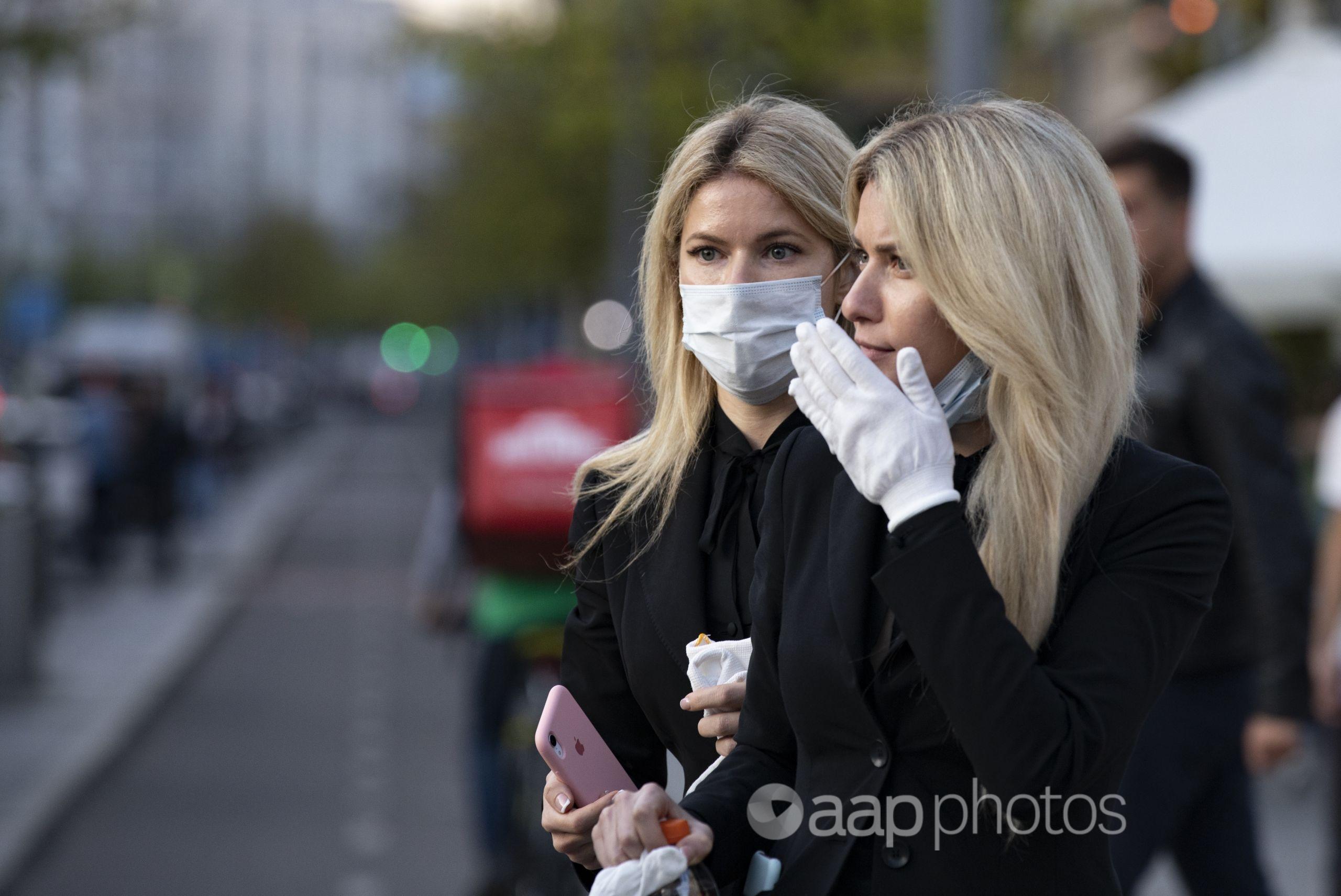The Statement
A Facebook post features a video of “Pfizer’s former vice president” Michael Yeadon, who claims that it “defies common sense” people with no symptoms can spread a virus like the one that causes COVID-19.
“This idea, for example, that you can be ill, even though you have no symptoms, and you can be a respiratory virus threat to someone else even if you have no symptoms – that’s also invented in 2020. There’s simply no history of it and it defies common sense as well,” he says at the start of the April 30 video post.
He goes on to claim: “Most of you don’t need a vaccine at all. Most of you would be well advised to stay away from experimental vaccines unfortunately that do come with a blood clot risk. Why would you take a risk with your health for something that’s not a threat to you?”
The post, which has been shared by New Zealand Facebook users, had gathered more than 480 shares and 2800 views at the time of writing.

The Analysis
Michael Yeadon’s claim that asymptomatic cases and transmission of respiratory viruses were “invented in 2020” is contradicted by numerous studies and research articles predating the COVID-19 pandemic, as is the implication that such viral spread is impossible.
He is also incorrect in his assertion that COVID-19 is not a threat and there is no need for vaccines in order to fight the coronavirus.
Multiple scientific studies have shown that people infected with SARS-CoV-2, the virus that causes COVID-19, can still transmit the virus despite being asymptomatic.
A 2020 review of evidence on asymptomatic SARS-CoV-2 infection, published in the American College of Physicians’ Annals of Internal Medicine, concluded that asymptomatic people can transmit the virus to others for perhaps longer than 14 days. It also says there is a likelihood that about 40 per cent to 45 per cent of people infected with SARS-CoV-2 will remain asymptomatic, but that the absence of symptoms does not necessarily imply an absence of harm.
The Centers for Disease Control and Prevention (CDC) said that, as of March 19, its best estimate was 30 per cent of all infections were asymptomatic and the infectiousness of asymptomatic individuals relative to symptomatic cases was 75 per cent.
In a study published in January, three of its academics found asymptomatic individuals were estimated to account for more than half of all COVID-19 transmissions based on a meta-analysis of eight studies from China.
World Health Organization (WHO) guidance on COVID-19 transmission states “people can transmit the virus both when they have symptoms and when they don’t have symptoms”.
Helen Petousis-Harris, a member of New Zealand’s Vaccine Safety Expert Advisory Group and director of the University of Auckland’s Vaccine Datalink and Research Group, said “asymptomatic transmission of infections is a well-established fact”.
She listed meningococcus, pneumococcus, influenza and pertussis as examples of infections that spread in the absence of symptoms.
“Most infectious diseases can be spread by persons not exhibiting any symptoms and history is filled with such examples,” Dr Petousis-Harris told AAP FactCheck in an email.
“A famous example of this is the story of Typhoid Mary. Mary Mallon was an asymptomatic carrier of salmonella typhi. She is believed to have infected 53 people with typhoid fever.”
Nikki Turner, director of the Immunisation Advisory Centre at the University of Auckland agreed, telling AAP FactCheck: “You can still carry (a) virus in the nasopharynx (back of the throat) without getting ill. Someone can be physically well but still carry and pass on a virus.”
In the video, Yeadon claims that the idea a person could be ill or a “respiratory virus threat to someone else” when asymptomatic was “invented in 2020”, however the concept has repeatedly been identified as a risk in research and other material predating the COVID-19 pandemic.
For example, a 2013 review into routes of influenza transmission noted that influenza modelling typically assumed up to 50 per cent of all infections would be asymptomatic or involve subclinical infections.
It pointed to several studies that showed a small proportion of flu infectiousness occurred before the onset of symptoms, although it added that it was yet to be shown that asymptomatic patients could effectively transmit the virus.
A 2005 Johns Hopkins Center for Health Security analysis on the effectiveness of public health and infection control measures in preventing the spread of influenza noted: “Asymptomatic patients shed virus and can transmit the disease, but not at the same rate as symptomatic individuals, which creates an invisible ‘reservoir’ for the virus. The implication of this is that public health disease containment measures and infection control measures, alone, may slow but cannot stop a flu epidemic.”
Similarly, a review from early 2019 into asymptomatic infection with the MERS coronavirus found asymptomatic cases made up around 25 per cent of confirmed cases in 2014 and such patients “may contribute to the transmission of the virus”.
Nevertheless, researchers have identified that one of the unique features of COVID-19 compared to SARS and MERS – although not the 2009 H1N1 virus, with which SARS-CoV-2 shares many characteristics – is that a large number of people are able to transmit the virus while pre-symptomatic, asymptomatic or mildly symptomatic.
Yeadon also falsely claims in the video that most people don’t need vaccination to prevent COVID-19. The suggestion has been widely debunked (see here, here and here).
In this article, Jennifer Grier, an assistant professor of immunology at the University of South Carolina, explains why relying on natural immunity isn’t enough to prevent COVID-19 infection.
“Immune protection isn’t always equal. The strength of the immune response, the length of time that the protection lasts and the variation of the immune response across people is very different between vaccine immunity and natural immunity for SARS-CoV-2. COVID-19 vaccines offer safer and more reliable immunity than natural infection,” she writes.
Dr Turner told AAP FactCheck unvaccinated people were at much higher risk of severe illness from COVID-19.
“So anyone who is unvaccinated would need to be very confident they are not going to be at risk of contact with COVID – we cannot guarantee that for anyone in the world at this point,” she said.
AAP FactCheck also sought clarification on Yeadon’s stint at Pfizer but received no reply from the company.
The post’s video lists him as “Pfizer’s former vice president”, although PolitiFact previously identified that Yeadon hadn’t worked for the pharmaceutical giant since 2011. That year, he was identified in a press release as a former vice president and chief scientific officer of Pfizer’s allergy and respiratory unit.
The Verdict
In the post’s video, Yeadon falsely asserts that the notion of asymptomatic cases and transmission of respiratory viruses such as COVID-19 was “invented in 2020” and that it defied reason. Numerous viruses have been tied to asymptomatic cases and transmission before this date, including influenza and the 2009 H1N1 respiratory viruses. Several studies have identified evidence of widespread asymptomatic transmission of SARS-CoV-2, which causes COVID-19.
Yeadon also repeats the debunked claim that COVID-19 vaccines are unnecessary. Experts and health authorities have identified that vaccines are safer and more reliable for protection from the virus than natural immunity.
False – Content that has no basis in fact.
* AAP FactCheck is an accredited member of the International Fact-Checking Network. To keep up with our latest fact checks, follow us on Facebook and Twitter.
All information, text and images included on the AAP Websites is for personal use only and may not be re-written, copied, re-sold or re-distributed, framed, linked, shared onto social media or otherwise used whether for compensation of any kind or not, unless you have the prior written permission of AAP. For more information, please refer to our standard terms and conditions.


















